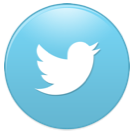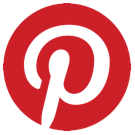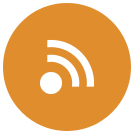Flat or Inverted Nipples – Ins and Outs

Irregularly-shaped (flat, divided or inverted nipples) are the nipples that don’t rise much above the areola surface or the ones that look as if the nipple skin is uneven or divided.
A simple way to check: Put your thumb and index finger on the areola and press fingers together. A regularly-shaped nipple would stick out and get erect. If your nipple hides inside the areola, you most likely have inverted or flat nipples.
Nipple shape irregularity may be of little concern and may not bother a woman during her entire life. For many women, however, it may be a major obstacle on the way to successful breastfeeding.
Some inverted nipples correct themselves during pregnancy as the
delivery time approaches. Blood vessels and mammary glands mature, areola
becomes darker, breasts increase in size. Most flat nipples become
regularly-shaped by the time milk comes in. Others retain their shape.
Inverted or flat nipples are less of an obstacle for “hardworking” babies. In fact, baby’s sucking is so strong, that it can stretch the nipple and push it all the way to the back wall of baby’s mouth.
For less enthusiastic eaters flat or inverted nipples may become a problem.
There is no way of knowing how willing your baby will be to work hard to get that liquid gold out of your breasts. Therefore, if you know you have flat or inverted nipples, it is worth trying to get them ready for nursing.
When is a good time to start?
Two-three weeks before the due date should do the trick. By this time you would also know whether or not your nipples corrected themselves.
What Do I Do?
Important: Be gentle. We don’t want to damage the glands in the areola or the nipple.
- Start by gently pulling your nipples with your fingers for 2-3 minutes twice a day. If you already purchased a breast pump, you can pump twice a day for 2-3 minutes. Be sure to clean your breasts, wash your hands and sterilize or boil your pump accessories first.
- Use breast shells (breast shields). These are not the same as nipple shields (described further).
Here is an easy way to distinguish between breast shells (shields) and nipple shields: we wear breast shells (shields) before the feeding and we wear nipple shields during the feeding.
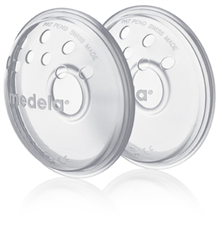
Breast shields have a form of a cup that you insert into your bra. There is an opening at the top of the cup. The cup gently presses on the areola and pushes the nipple out of the cup opening.
This trains inverted nipples to look outward rather than inward. Put shields on for half an hour before every feeding. Use with caution, don’t let the cup put too much pressure on the breast or cause pain.
- Start wearing a nursing bra with flaps for easy breastfeeding. Leave the flaps open when you can to let air and clothes touch your nipples.
- Don’t use soap and lotions. Soap dries the nipple skin and may cause cracks. Lotions can clog areola pores.
Breastfeeding with Flat or Inverted Nipples
- Continue massaging and gently pulling the nipples when breastfeeding starts.
- Breasts with flat or inverted nipples may not get fully emptied at every feeding. Manually express milk remaining in the breast or pump it and give to your baby.
- Avoid severe engorgement before the nursing session. Engorgement makes flat
nipples even flatter. Express some milk before breastfeeding.
- Correct positioning is crucial for moms with inverted or flat nipples.
- Some inverted or flat nipples come in combination with low milk supply.
The
baby is hungry and sucks vigorously and in a hurry. As a result, proper latch-on doesn’t
always happen. This in combination with an irregular nipple shape may lead to
baby’s swallowing a lot of air. It may cause colic and gassiness. Burp your
baby more often and use nipple shields.
Nipple Shields
To assist breastfeeding and prevent air-swallowing use nipple shields.
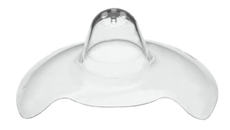
Nipple shield serves two purposes. First, it helps babies latch on to a flat or inverted nipple, because it gives the baby a larger area to grasp. Second, sucking on the shield helps draw the nipple out and correct it.
Choose shields that fit well. The nipple should come as close to the shield as possible. It makes it easier for the baby to suck.
As your nipples become
more elastic and outward-looking and your baby gains strength, you can
discontinue use of nipple
shields.
Contact nipple shield from Medela is my favorite. It has a unique cut-out shape (shown on the picture). The cut-out is positioned under the baby's nose. This feature maximizes skin contact between baby and mother.
Medela nipple shields come in different sizes. Size of the shield depends on the size of your baby's mouth and is best determined by a lactation specialist.
Click links below to find out more about this nipple shield:
Medela Contact Nipple Shield - 20 mm Small
Breastfeeding with the help of a nipple shield tends to leave some milk in the breast. Pumping is crucial for both nipple stretching and stable milk supply. Not a drop should go unpumped!
Don't underestimate the role and effectiveness of a nipple shield. Multiple studies have proven that it can save breastfeeding for moms with flat, short or inverted nipples.
Discontinue the use of any devices if your nipples are no longer flat or inverted and enjoy breastfeeding!
There are many ways to show your love and devotion to your kids and to win their trust. Breastfeeding is the most natural one.
Yours,
Viktoriya
Home › Breastfeeding Problems › Inverted Nipples





